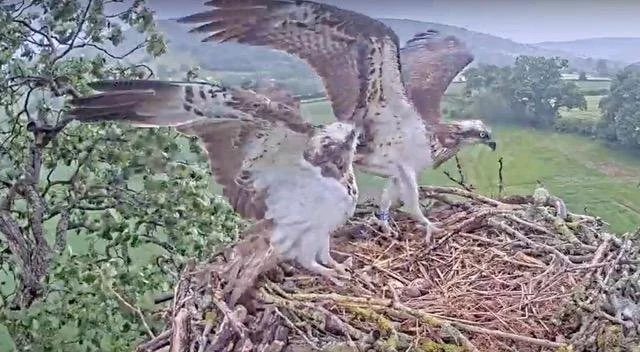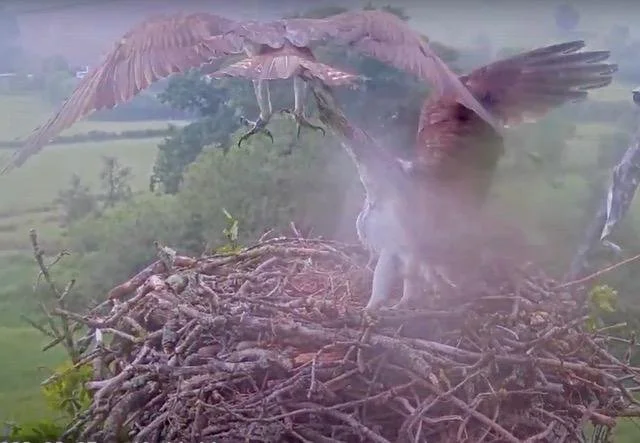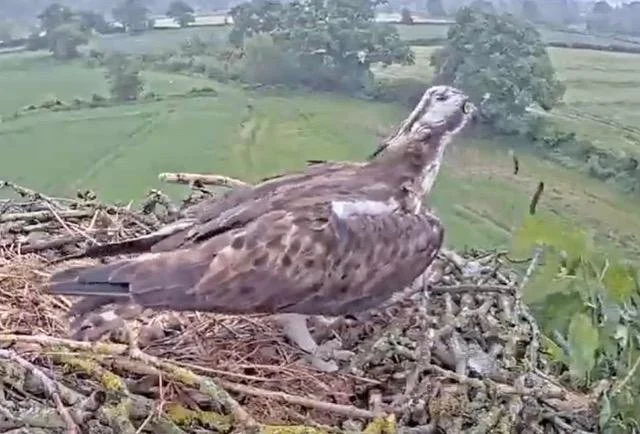OSPREY INTRUDER ARRIVAL
Intruder 2E9 right, Syfaddan (male) left
At 1.14pm on Tuesday 27th May some disruption entered the lives of our pair, Syfaddan (male) and Clogwyn (female). Ringed on the left leg, 2E9 was one of three females ringed in the nest in the Tweed Valley in 2023. It therefore fits the increased likelihood for one or more wandering 2-yr olds in May to visit the Usk Valley. That age cohort make their first return migration to the UK. By this date in 2024 when the Gilestone nest was not occupied full-time the nest had attracted at least five visiting ospreys.
Intruder 2E9 (left) descends on the nest. Syfaddan (right) calling out in alarm, alerting Clogwyn (female). Heavy rain and windy conditions adding to the drama.
Today’s visitor was given short shrift and was ejected from the nest area within one minute by our breeding pair. As soon as the visitor left the nest Syfaddan gave chase to evict it from his territory. (See video below to watch the incident in full.)
Clogwyn watches as Syfaddan chases the Intruder below..
The three eggs are entering a critical phase in the breeding year – hatching is expected within the next week. It is possible that camera watchers will notice a change in behaviour of the adults to respond to signals given from within the eggs. In many species of birds there is communication between hatching chicks and the incubating adult. While signals of the chick’s hatching intent are not likely to be heard by nestcams, adult behaviours might noticeably change in response. Bearing in mind this young pair have not experienced parenthood before, the incubating parent is likely to become fidgety, to sit higher on the nest and may introduce a range of new communication signals. This is the introductory phase for the chick-rearing process giving nestcam watchers a whole new insight into the rearing of young Ospreys. If you thought the male had been busy so far, then his fish provision duties will step up considerably to provide for two adults and up to three chicks for at least the next three months.



